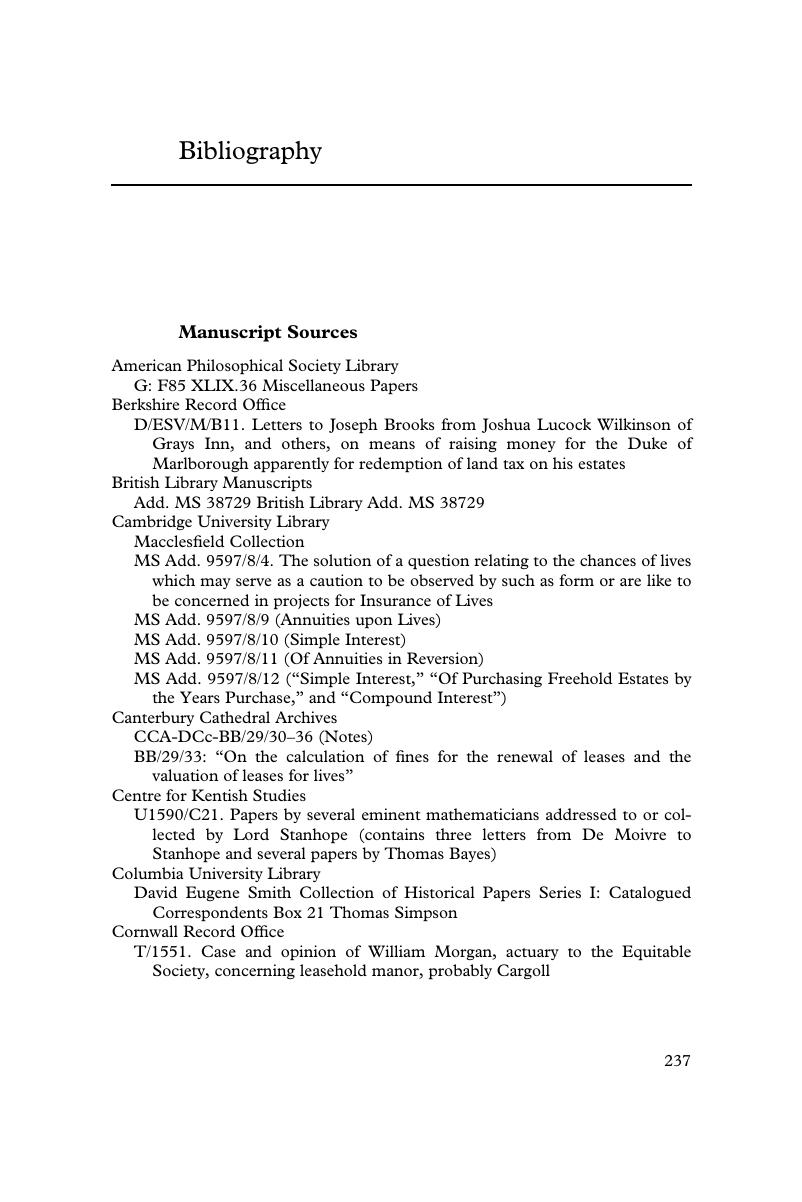 Leases for Lives
Leases for Lives Book contents
- Leases for Lives
- Leases for Lives
- Copyright page
- Dedication
- Contents
- Preface
- Acknowledgments
- 1 Introduction
- 2 Mathematics and Property in the Seventeenth Century
- 3 Edmond Halley’s Life Table
- 4 Halley’s Impact or Lack of It
- 5 De Moivre and His Early Influence
- 6 Mathematicians as Consultants
- 7 Mathematicians and Early Life Insurance Companies
- 8 The Annuity Bubble of the 1760s and 1770s
- 9 The Aftershocks of the Bubble, Their Impact on Life Annuities
- 10 Developments in the Life Insurance Industry in the Later Eighteenth Century
- 11 A Return to Roots
- 12 Conclusion
- Book part
- End Notes
- Bibliography
- Index
- References
Bibliography
Published online by Cambridge University Press: 26 July 2017
- Leases for Lives
- Leases for Lives
- Copyright page
- Dedication
- Contents
- Preface
- Acknowledgments
- 1 Introduction
- 2 Mathematics and Property in the Seventeenth Century
- 3 Edmond Halley’s Life Table
- 4 Halley’s Impact or Lack of It
- 5 De Moivre and His Early Influence
- 6 Mathematicians as Consultants
- 7 Mathematicians and Early Life Insurance Companies
- 8 The Annuity Bubble of the 1760s and 1770s
- 9 The Aftershocks of the Bubble, Their Impact on Life Annuities
- 10 Developments in the Life Insurance Industry in the Later Eighteenth Century
- 11 A Return to Roots
- 12 Conclusion
- Book part
- End Notes
- Bibliography
- Index
- References
Summary

- Type
- Chapter
- Information
- Leases for LivesLife Contingent Contracts and the Emergence of Actuarial Science in Eighteenth-Century England, pp. 237 - 254Publisher: Cambridge University PressPrint publication year: 2017


